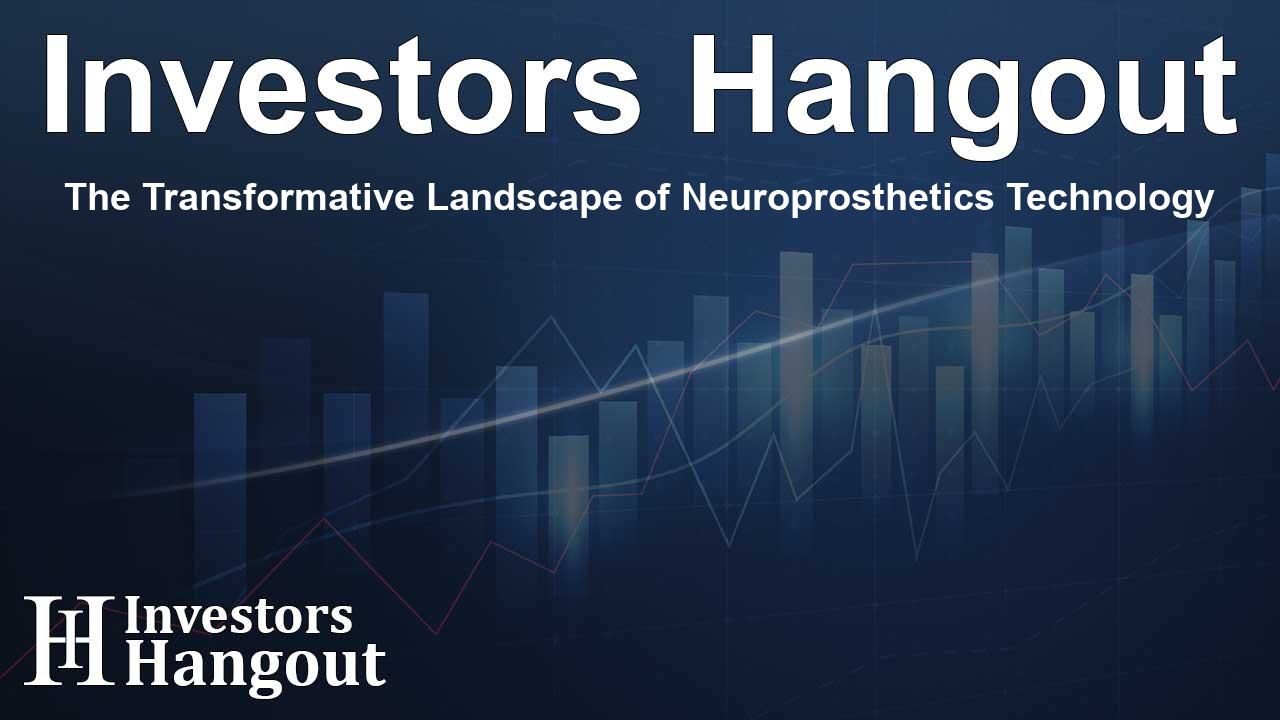The Transformative Landscape of Neuroprosthetics Technology

Current Landscape of Neuroprosthetics
Worldwide, the neuroprosthetics market is witnessing remarkable growth, spurred by innovative research in neuroscience and advanced technology. With the continual rise in neurological disorders, the craving for more effective treatments is propelling this market forward.
Innovations in Neuroprosthetics
Neuroprosthetics involves creating devices that enable interaction with the nervous system to restore or enhance lost sensory or motor functions. These technologies range from external solutions like cochlear implants to intricate brain-computer interfaces (BCIs) that allow direct communication with external devices. By interpreting neural signals, these systems can facilitate movements in prosthetic limbs or assistive technologies, thereby improving patients' quality of life.
The ongoing research in neuroprosthetics aspires to transform how we treat various neurological conditions such as spinal cord injuries, stroke, and the effects of neurodegenerative diseases. Recent advancements in fields like materials science and neural engineering are yielding increasingly sophisticated and minimally invasive devices. Researchers aim to develop neural pathways that significantly improve functional restoration and lead to a more profound understanding of the brain's mechanisms.
Regional Perspectives on Neuroprosthetics Market
The growth of neuroprosthetics is not uniform; it exhibits varying trends in different geographical regions. North America, Europe, and parts of Asia are notable frontrunners in this innovative field. The establishment of advanced healthcare systems, high spending on healthcare, and an aging population needing neuroprosthetic solutions characterize North America's market.
Europe presents a robust growth scenario due to focused government investments in healthcare and rapid advancements in neuroprosthetic technologies. Meanwhile, the Asia-Pacific region is gradually accommodating the increasing healthcare demands, a burgeoning middle class, and enhanced access to advanced medical devices, positioning itself for future growth.
The rising incidence of neurological disorders and heightened interest in rehabilitation solutions significantly influence demand across regions. In North America, a favorable regulatory environment enhances growth, while European nations are incorporating neuroprosthetics into public healthcare systems.
Challenges and Opportunities Ahead
While the neuroprosthetics market is expanding, it also faces several hurdles. The steep costs associated with advanced devices can hinder access and prevent widespread adoption. Furthermore, limited training and inadequate infrastructure in less-developed regions make effective implementation a challenge.
On a brighter note, opportunities abound with the integration of advanced techniques such as robotic-assisted implantation, expected to increase precision and reduce risks. The evolution of smart implants promises increased functionality, personalized patient experiences, and faster adoption of neuroprosthetic solutions. Collectively, these advancements may lead to enhanced surgical procedures, quicker recovery times, and more effective treatments.
Key Players in the Neuroprosthetics Domain
Driving the neuroprosthetics market forward are both large established medical device companies and innovative startups. Market leaders include Medtronic, Boston Scientific, Abbott Laboratories, and others, all contributing unique advancements in neural interface technologies.
With the assistance of academic and research institutions, these organizations continue to expand the horizons of neuroprosthetics, ensuring transformative effects for individuals dealing with spinal cord injuries, neurodegenerative disorders, and brain-related complications.
The Future of Neuroprosthetics
Looking ahead, the neuroprosthetics market is on a promising trajectory, with a growing focus on innovative and effective solutions for patients. As technology continues to progress, the potential for these devices to enhance lives is boundless.
Frequently Asked Questions
1. What is the current market growth rate for neuroprosthetics?
The neuroprosthetics market is expanding at an approximate CAGR of 13%.
2. What are some advancements in neuroprosthetics?
Recent advancements include brain-computer interfaces and implantable devices that improve interaction with the nervous system.
3. Who are the key players in the neuroprosthetics market?
Major companies include Medtronic, Boston Scientific, and Abbott Laboratories among others.
4. What challenges does the neuroprosthetics market face?
Challenges include high costs of devices and inadequate healthcare infrastructure in underdeveloped regions.
5. What opportunities exist in the neuroprosthetics market?
Opportunities arise from robotic-assisted implantation and the rise of smart implants for personalized treatments.
About The Author
Contact Dominic Sanders privately here. Or send an email with ATTN: Dominic Sanders as the subject to contact@investorshangout.com.
About Investors Hangout
Investors Hangout is a leading online stock forum for financial discussion and learning, offering a wide range of free tools and resources. It draws in traders of all levels, who exchange market knowledge, investigate trading tactics, and keep an eye on industry developments in real time. Featuring financial articles, stock message boards, quotes, charts, company profiles, and live news updates. Through cooperative learning and a wealth of informational resources, it helps users from novices creating their first portfolios to experts honing their techniques. Join Investors Hangout today: https://investorshangout.com/
The content of this article is based on factual, publicly available information and does not represent legal, financial, or investment advice. Investors Hangout does not offer financial advice, and the author is not a licensed financial advisor. Consult a qualified advisor before making any financial or investment decisions based on this article. This article should not be considered advice to purchase, sell, or hold any securities or other investments. If any of the material provided here is inaccurate, please contact us for corrections.
